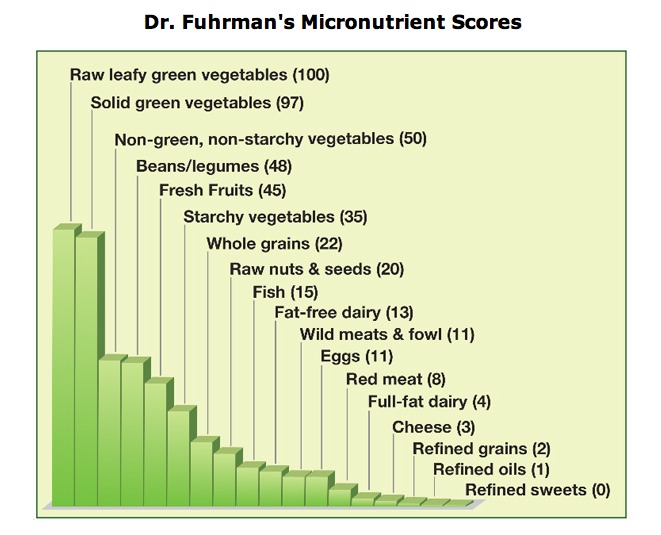 Lots of intelligent people talk about not eating unhealthy chili dogs, cotton candy, potato chips, deep fried anything, and pitchers of cool, crisp hefeweizen on a warm, sunny summer day. Okay, very few people ever talk negatively about that last one, but you get my drift.
Lots of intelligent people talk about not eating unhealthy chili dogs, cotton candy, potato chips, deep fried anything, and pitchers of cool, crisp hefeweizen on a warm, sunny summer day. Okay, very few people ever talk negatively about that last one, but you get my drift.
Whether healthy or not, I have a feeling most people generally know that thing dripping with some unknown liquid from some frier in the back kitchen is not the healthiest. At least, I hope people think that’s unhealthy.
So, if most people are thinking alike yet still unhealthy or, at the very least, making poor health decisions, we can narrow down the health crisis that confronts us to two main issues: 1) people disregard what they know and choose to still eat the crap or 2) people are uninformed as to what they truly need to put in their body.
Since I can’t do much in regards to changing other’s choices to eat crap, I’d like to focus on informing you on the two most ignored essentials to life: micronutrients and macronutrients.
Micronutrients & Macronutrients
You know a bunch of asparagus and a cage free chicken breast are healthy items to eat.
But why are they healthy?
The typical answer, and quite right answer, is that these two items come from the purest sense of nature. Most of us, including myself, often stop there. However, the conversation and thought process should go far beyond that though.
Humans and many other living organisms survive off just two things. These two things are further broken down into items where we can get these two things. They are micronutrients and macronutrients.
A micronutrient is an essential nutrient, as a trace mineral or vitamin, that is required by an organism in minute amounts. Typical micronutrients are vitamins, iron, cobalt, chromium, copper, iodine, manganese, selenium, zinc and molybdenum. They enable the body to produce enzymes, hormones and other substances which are essential for proper growth and development (source).
There are three primary macronutrients defined as being the classes of chemical compounds humans consume in the largest quantities and which provide bulk energy. These are protein, fat, and carbohydrates (source). When you think of macronutrients think of the foods that provide the calories to burn energy.
That’s all fun and dandy, but you want to know what this means.
When it comes to your diet, you have two goals. The first goal is to get the micronutrients that will help you continue to regenerate the molecular development and maintain the chemical balance of the body. The second goal is to get the macronutrients to fuel everything that we do.
I know, this sounds all like some personal trainer or lab geek jargon, but it is highly important that you understand how your food works. Let’s say you were to ignore the macro/micronutrient point and just ate cabbage and lamb chops every meal. Now, you could be getting a significant amount of the macronutrients like protein, fat, and carb’s, but you are significantly limiting your micronutrient balance. By being micronutrient deficient, you become susceptible to disease and poor development. The same goes when you solely take vitamins in pill form to cover your micronutrient intake. Sure, your body might have the items for rebuilding itself, but it has no energy without consuming large portions of macronutrients.
Just Tell Me What to Do Already
I could sit back and tell you exactly what you need to eat every meal, but we know that will be a huge failure after 2 weeks. What we can do is take this newfound knowledge and apply it to our daily diet.
When you are considering your diet for the day, consider the following basic principles that likely will lead to a healthy and balanced diet.
- If it’s previous life step didn’t involve coming from the ground, it more than likely doesn’t fulfill it’s micro/macronutrient potential. The watermelon grows on the ground. The apple tree grew from the ground. The little piggy ate grass from the ground. The sweet potato grew in the ground. If the step almost immediately prior to the food being on your plate had something to do with the ground, it more than likely contains a great source of the micro/macronutrients you need.
- If it’s been processed, it’s probably been stripped of most of it’s quality micro/macronutrients. The more a natural piece of food has been processed, the more it loses it’s essential nutrients (source). Though you are not going to be seeing me eat the heart of a cow 10 minutes after slaughter and you won’t see me digging up beets in the backyard to munch in the garden, I try to maintain the food’s state to as close as humanly edible. What’s the point in eating a head of broccoli if you steamed the nutrients out of it. Might as well eat dirt if it’s not going to be doing anything for you.
- If it’s been kid-tested, it probably has few healthy micro/macronutrients. Kids love sugar, salt, sweets, and bad fats. If kids like it, it probably is not healthy. When you are walking down the grocery aisle and come up to those little tasty filled pies with the sugar coating around the hard pie-like shell, ask yourself, “Would a kid love this?” If yes, which is obviously the case with the little delectable pie, it probably is not providing much of a health benefit to you.
The list of ways to know whether you are eating something that has the proper micro/macronutrients could go on and on, but these were three clues that might help you going forward.
ANDI, Your New Best Friend
“I am too lazy to read every label on everything to eat to see if I am getting enough Iron.”
Sound familiar? Well, it probably does and it’s the same way I feel.
That’s why Dr. Joel Fuhrman created the aggregate nutrient density index scale also known as the ANDI scale. What the ANDI scale does is base foods on micronutrient concentration (source). In other words, a scale showing which foods will give you the most bang for your buck.
Each of these whole foods is given a score based on the equation H=N/C, which is that the health of a food is equal to the nutrients it delivers per calorie (source).
Here is a sample chart from Fuhrman’s own site (source):
Here is a sample chart of where some foods lie (source):
How to Implement ANDI
“David, you are crazy to think I am just eating kale, cauliflower, and salads going forward.”
I know and I wouldn’t expect you or anyone to survive on just the tip-top items on the ANDI. However, what we can do is implement the top scored items on the ANDI into our meals first followed by items that fall lower down the index.
Try basing your meal around the top tier ANDI foods and then supplement with foods lower down on the totem pole. Preferably, supplementation that’s healthier than soda and french fries. 🙂
Implementation is not about being perfect. It’s just about being better than before. Don’t kill yourself in some micro/macronutrient competition. Just implement as best you can.
Nutrients Build, Kill, & Thrill
This stuff isn’t as fun and as exciting as learning about paleo spaghetti, but it’s important. You know it’s important or you wouldn’t have gotten this far in this article.
What you should try to take away is that the nutrients you do (or DON’T) choose to put into your body directly correlate to how you feel and perform. You could do an hour run, 30 minute bike, 30 minute weightlifting session, and follow that up with a 10 minute swim and if you choose to eat bread and butter and nothing else, eventually, your body will shut down no matter how much you work out.
Micronutrients and macronutrients can be your stepping stone over the competition or they can be the reason you are being stepped over.
You wouldn’t put sludge into your gas tank and expect to get anywhere. Start making the conscious effort to put the top-grade fuel in your body and start seeing the results immediately.



Great post! Thanks for explaining this; I’ve definitely been guilty of ignoring the micro/macronutrient thing.